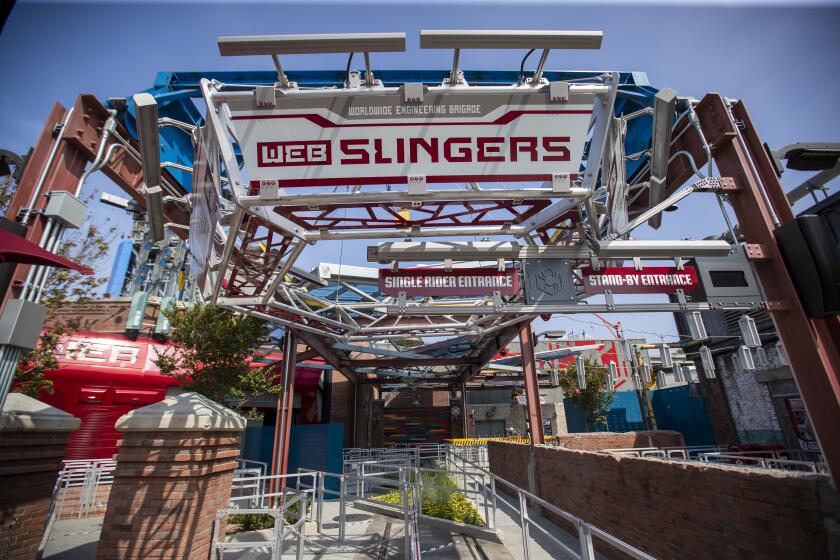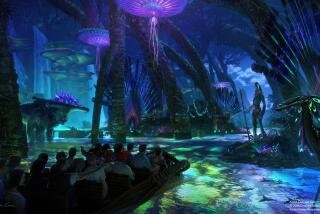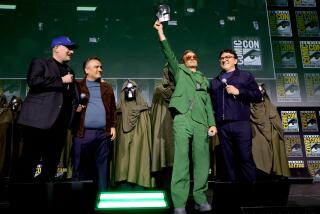How Disney used cutting-edge robotics to make Spider-Man soar over Avengers Campus
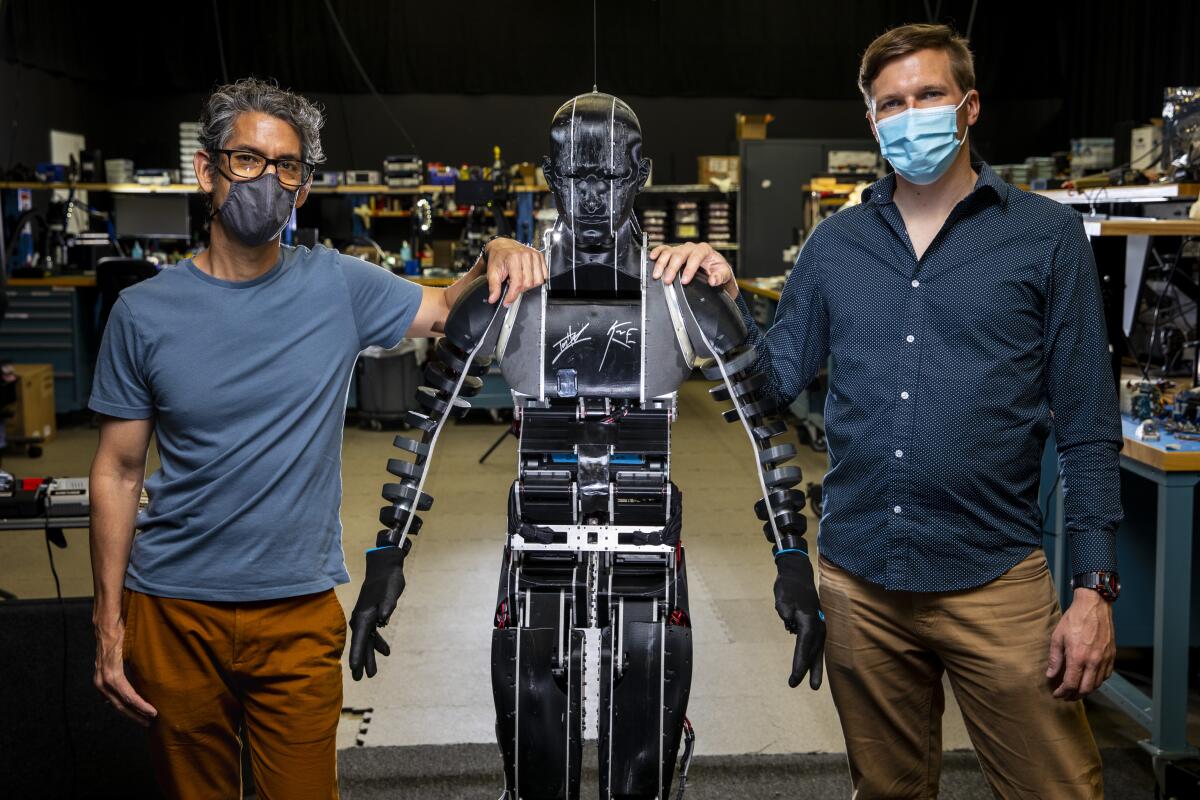
- Share via
On opening day of Disney’s Avengers Campus, the theme-park extension of the blockbuster Marvel Cinematic Universe, a sea of awestruck fans looked skyward and let out a collective gasp.
“That was the first time I really felt like, ‘Oh my God. I guess we did it,’” says Tony Dohi, principal research and development Imagineer at Walt Disney Imagineering.
For years, Dohi and his team had been hard at work on Marvel’s latest marvel: a robotic Spider-Man stunt double that can perform stunning acrobatic displays while soaring more than 65 feet in the air, no strings — or webs — attached.
“When we had our first brainstorm session on this, it was one of those moments that you live for as an Imagineer,” Dohi says on a recent video call. “This is a very ambitious meet and greet, I must say. Unlike anything else.”
The high-flying android superhero, coined “Stuntronics” by the innovators at Disney, is one of multiple eye-catching attractions that debuted earlier this month as part of Disney California Adventure‘s Avengers Campus.
Tucked away between the grand entrance to California Adventure and rustic Cars Land is a sparkling sci-fi utopia teeming with cameos from fan-favorite Marvel characters, including Spider-Man, Captain Marvel, Doctor Strange and Black Panther.
“We made certain vows that a guest could not walk through Avengers Campus without seeing some heroes,” says Dan Fields, a creative executive overseeing live entertainment at the parks.
“Which seems really basic, but ... there are different frequencies of characters that appear in different parts of the park. ... The promise that we wanted to make was that we would overwhelm the guest experience because ... it’s a living breathing place that’s happening here and now.”
Avengers Campus will open Friday at Disney California Adventure Park. It includes the new Web Slingers: A Spider-Man Adventure interactive ride.
Immediately upon entering the superhero sector of the park, guests are served what Fields calls a “robot sandwich.”
On the roof of a sleek industrial building that houses Web Slingers — an interactive Spider-Man simulator ride — a human actor dressed as the friendly neighborhood Avenger somersaults, backflips, cartwheels and charms the crowd before running offstage to make way for a mechanical twin.
“Here goes something,” the youthful voice of Tom Holland, the latest movie star to portray the plucky teen web-slinger on the big screen, rings out over a loudspeaker. Suddenly, Stuntronics Spidey hurtles through the air, strikes a heroic pose and disappears behind the webbed-out warehouse — allowing human Spidey to reemerge and resume his meet-and-greet responsibilities.
“When we were conceiving of Avengers Campus, we knew that we wanted to push ourselves to allow our guests to interact with and see Spider-Man in more iconic ways,” Fields says.
“There are limitations to what you can do with a human body in an outdoor setting, wearing a full face mask, and to make that really authentic and believable — not just for a 7-year-old but for anybody who’s watching it. But we knew how critical that was for the guest experience of the most popular hero ... in the canon.”
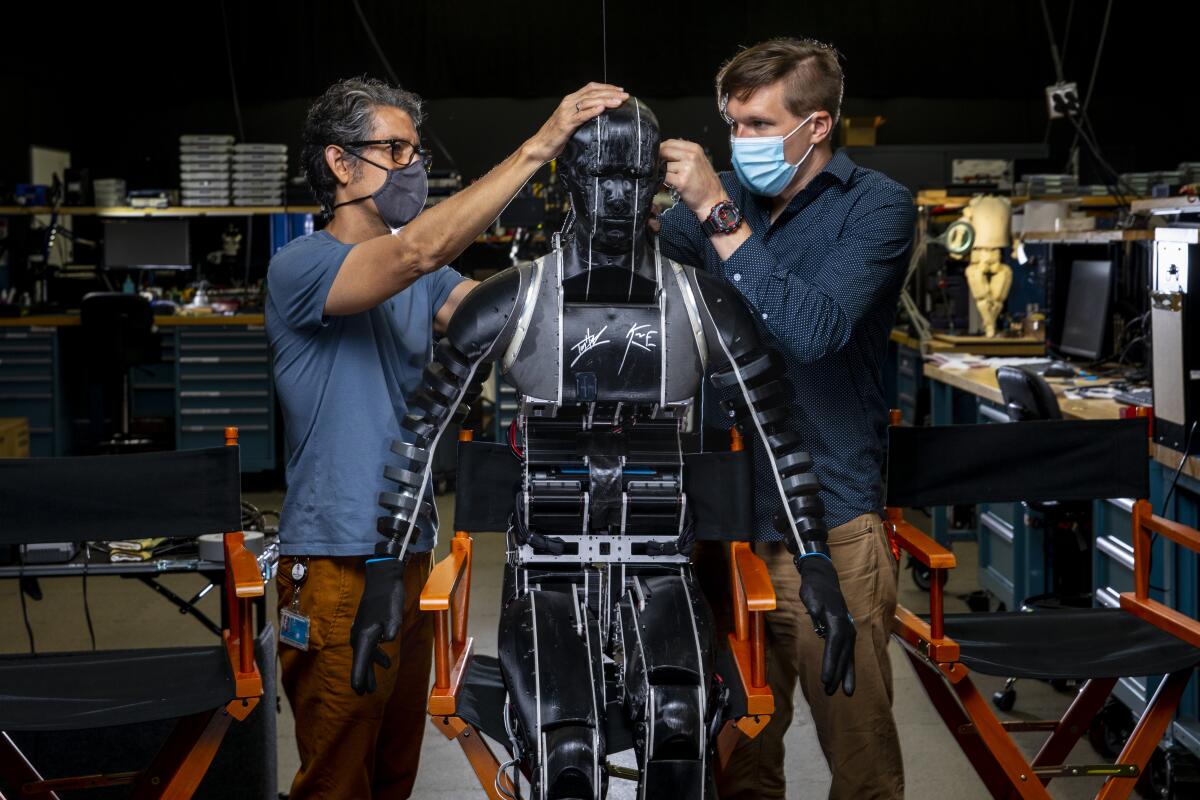
The seamless transitions are designed to convince onlookers that the actor and robot are one superhuman capable of amazing physical feats. But the optical illusion also functions as a practical solution to a conundrum that arose early in development: How does a robot gymnast stick the landing?
Thanks to the robot-sandwich approach, the simple answer is it doesn’t. At the end of its breathtaking arc, Stuntronics Spidey falls out of sight and into a giant net while human Spidey continues to dazzle park-goers.
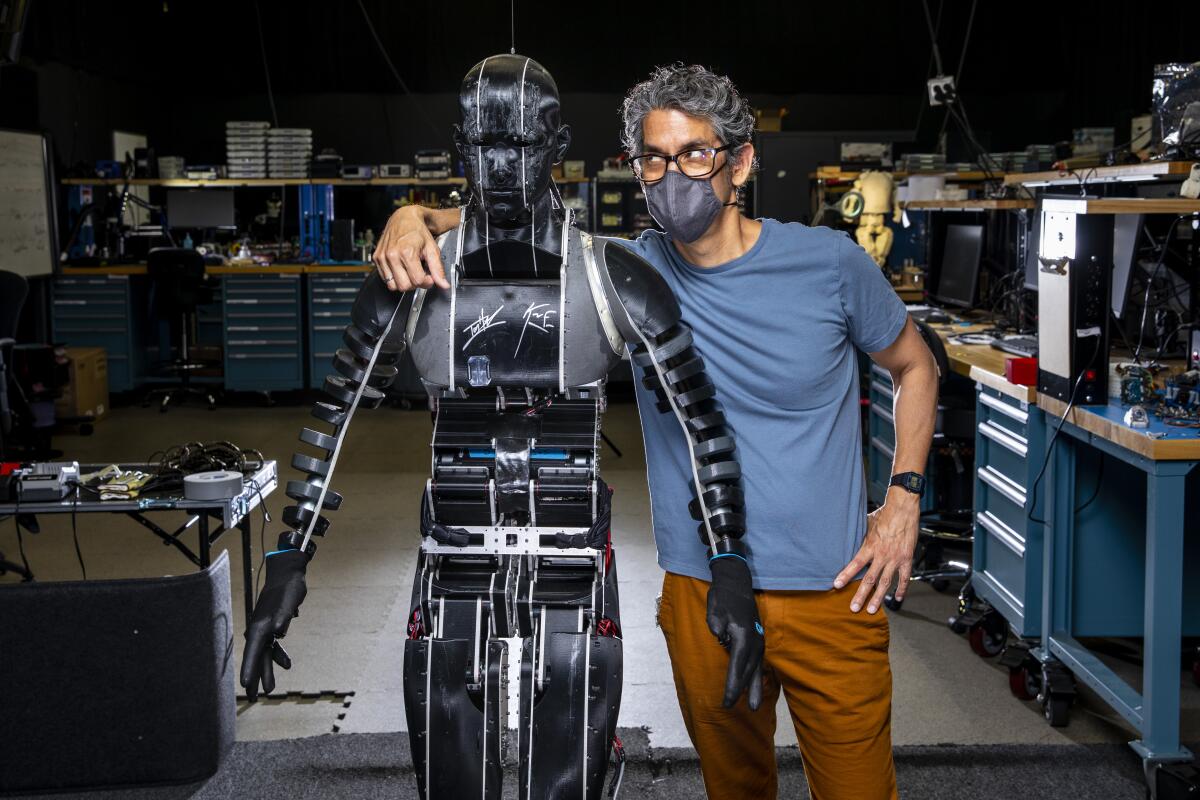
“The aerial acrobatic robot was just one piece of this thing,” Dohi says. “It needed the bookends. It needed to have the context that Dan’s story provided for, and it solved some technical challenges. ... It opened up the opportunity then too to ask, ‘Well, how high can we throw this thing now?’”
Because “the most natural way for Spider-Man to fly through the air is with a web,” Dohi and his team devised an advanced slingshot system involving a line and a “very, very, very powerful motor” capable of launching various flight combinations, or “throws,” on repeat.
When suspended, the sensor-equipped machine is programmed to rotate and glide in a way that mimics human movement, which required the Imagineers to abide by pioneering physicist Isaac Newton’s third law of motion (every action has an equal and opposite reaction) while carefully choreographing an “aerial ballet.”
“Could we deliver on this moment that would be spectacular ... something that would be superhuman? That was the challenge,” Dohi says.
“I can’t express how fun that is. ... It’s the furthest thing from work. You can’t believe that you’ve got this job ... designing and throwing robots around.”
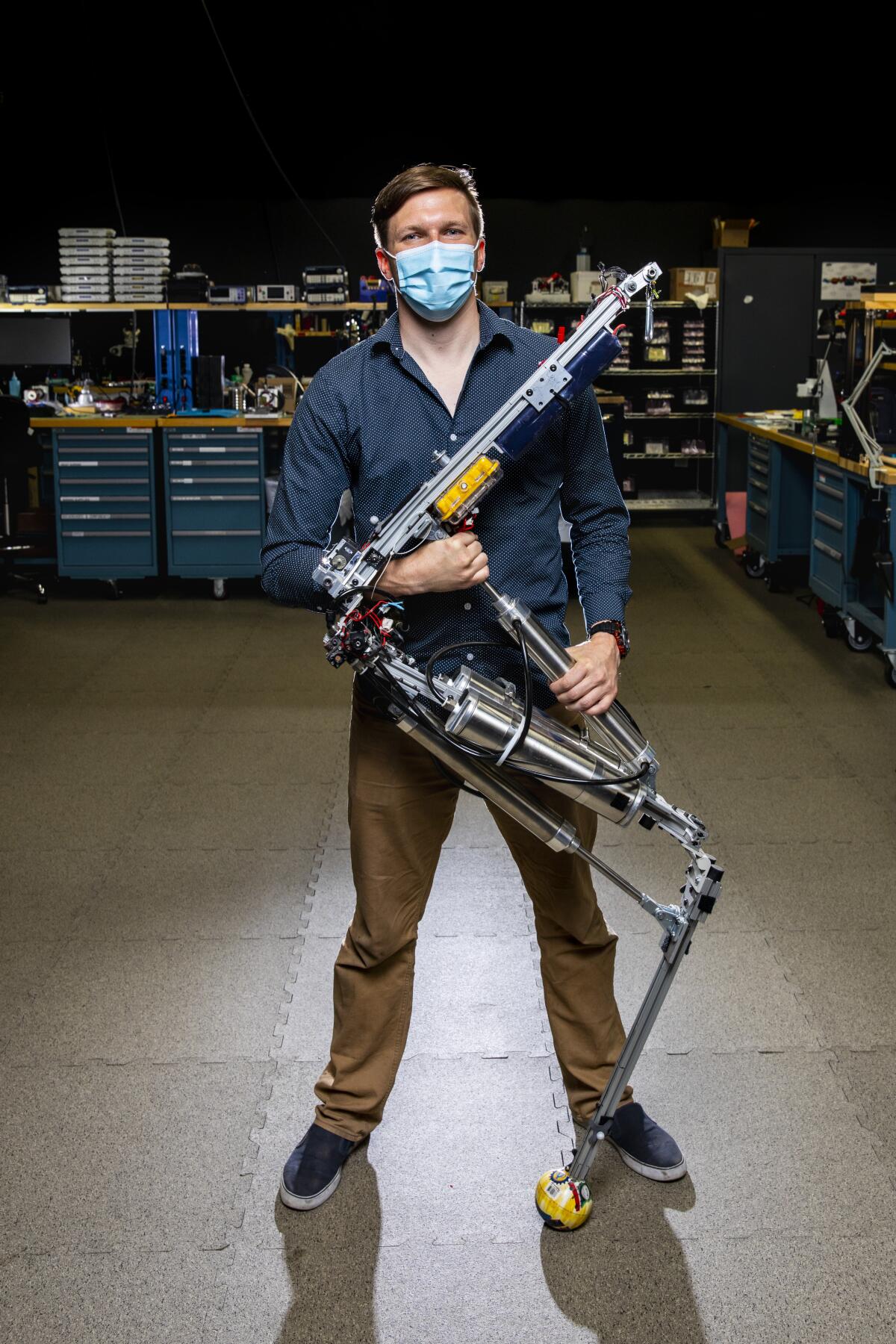
Of course, while plotting the anthropomorphic android’s sweeping trajectory, the Imagineers were also forced to consider gravity. What goes up must come down — and hard, when dealing with a 95-pound hunk of 3D printed plastics, aluminum, sensors, microprocessors and servo motors catapulted dozens of feet above ground.
To avoid a catastrophic collision, Dohi and his crew created a “simple yet sophisticated system” to slow the robot’s descent over a short distance.
“This is something that we could never do with a human performer,” Dohi says. “Our intentions were never to replace a human performer. They were actually to do something that we would never dream to do with a human performer. Now, that said, you can also break a robot. And so, the way that we decelerate that robot was a critical part of the development of this.”
By the time Dohi’s squad presented its first set of throws to Fields, Stuntronics Spidey was in perfect form, flawlessly executing the exact combinations upon which they’d agreed with swanlike precision.
There was only one problem: Spider-Man is far from perfect.
“We loved it, but we felt that it was too pretty,” Fields says. “They all looked awesome, and part of the fun of Spider-Man — both in the comics and the films — is that ... he’s a teenager with some hubris, so for him to not nail it — to not always be in control of his body — was actually good engineering.”
“That was very liberating ... because we didn’t have to focus on making sure that the figure was in the right plane and the right orientation as it’s landing,” Dohi adds. “We had to reframe our entire thinking of what does ... Spider-Man out of control look like as he’s flying through the air?”

After about three years of navigating a “completely uncharted area of animatronic development” via trial and error, the Imagineers arrived at their final product: a free-falling robotic figure capable of performing six different stunt sequences inspired by some of Spider-Man’s most epic moments on the page and screen.
“Nothing we build is precious in that we couldn’t risk destroying it to learn something,” Dohi says. “The Spider-Man character, it gave us an opportunity to really stretch out. He sails through skyscrapers, so we can’t be content with some short, low throw. We really want to see how far we can we can sling this guy.”
By 2020, Disney was poised to unveil Stuntronics — the first technology of its kind — along with the rest of its Avengers Campus that July. That is, until the COVID-19 pandemic spurred a sudden 13-month shutdown spanning both Disneyland and California Adventure.
The unprecedented closure was “quite painful,” Fields says, for many Disney creatives who had no choice but to “go home and put their pencils down” until it was safe to resume operations.
“There was some nervousness that that pause would affect the consistency of what we’re trying to do,” Fields says. “But honestly, once we were given the green light to come back, we came out of mothballs very quickly ... and then we just drove it to the finish line.”
“When you’re given the green light again, it’s like a shot in the arm,” Dohi adds. “You turn on a robot for the first time ... [i]t gives you this excitement that you didn’t know you had, because of all the events of that whole horrible time kind of made you numb to everything. ... It was a really emotional moment for us.”
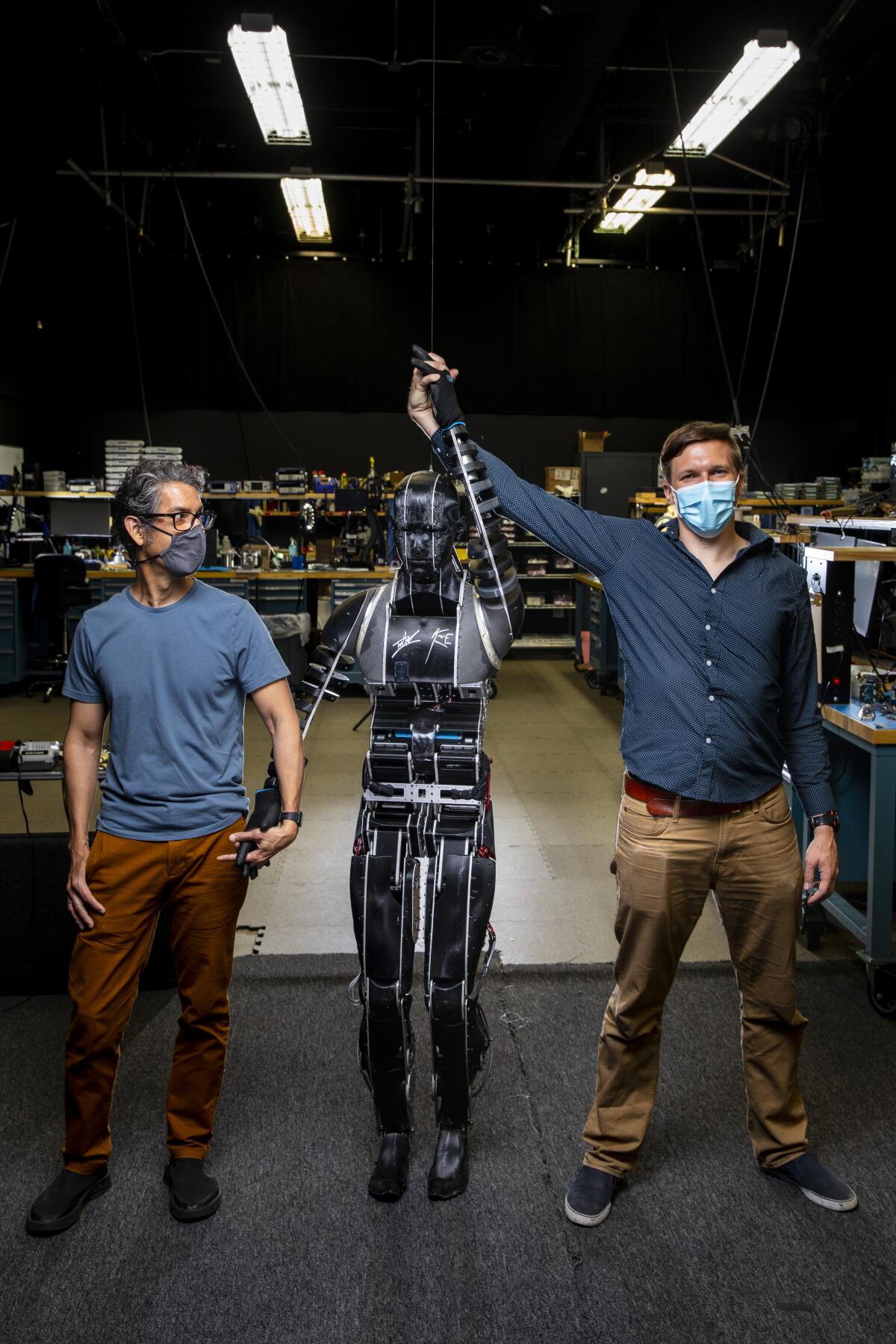
Despite its glaring drawbacks, the yearlong delay did buy the live entertainment department extra time to fine-tune the “Amazing Spider-Man” show and add some final flourishes, such as voice-over work from none other than Holland.
The 25-year-old British actor also is featured during the immersive ride portion of California Adventure’s Spider-Man experience, available to a limited number of lucky guests per day via a virtual queuing system.
“We were really making sure we were getting the same Tom Holland, the same Spider-Man, the same Peter Parker for both parts of the show,” Fields says. “He’s just a lovely person and quick on his feet and witty. ... He put his own shine on it that really makes it special and authentic.”
In the final stages leading up to the campus’s grand opening, Holland’s euphoric exclamations could be heard only late at night, when executives and park cast members were invited to stick around after hours for secret showings of Stuntronics in full swing.
“They shrieked at the top of their voices with the glee of children,” Fields says, laughing. “That opening day was incredible, but to hear our own cast members — who knew what it was — be so delighted ... I’m getting a little weepy just thinking about it.”
One of those cast members tells The Times during a recent visit to the parks that, in order to avoid drawing large crowds, Struntronics Spidey does not operate on a fixed schedule. After all, with great power comes great responsibility, especially on the heels of a global health crisis.
Instead, like the real Peter Parker, he keeps a low profile, hiding his extraordinary abilities from the world until — when you least expect it — he swoops in to save the day.
More to Read
The biggest entertainment stories
Get our big stories about Hollywood, film, television, music, arts, culture and more right in your inbox as soon as they publish.
You may occasionally receive promotional content from the Los Angeles Times.
